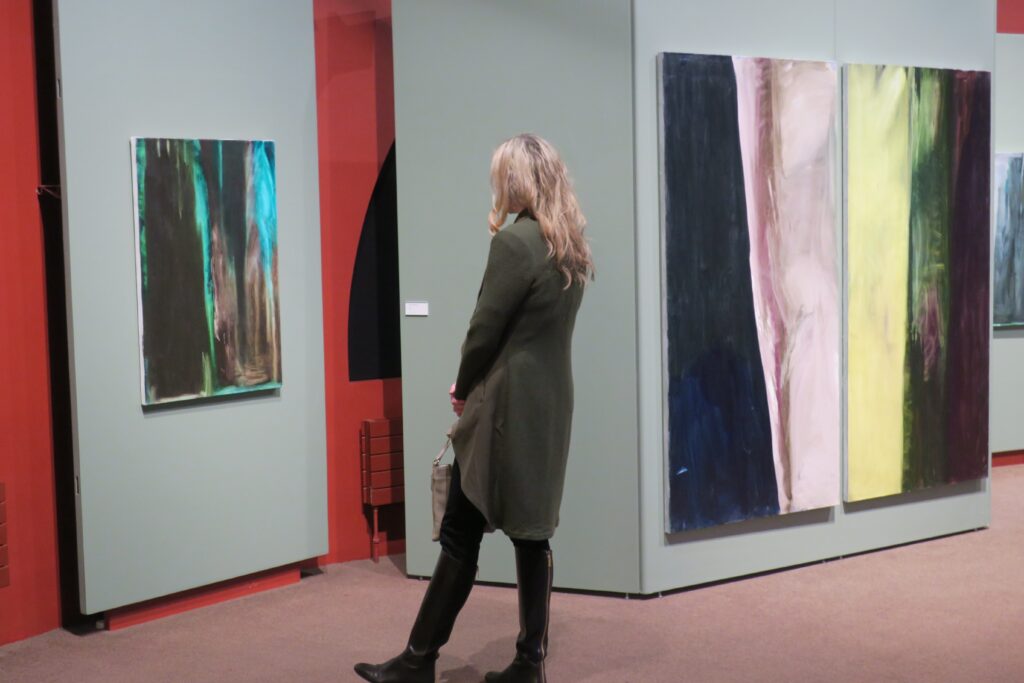Artists on Coping: Jane Swavely

During the Coronavirus pandemic, Art Spiel is reaching out to artists to learn how they are coping. This extended interview is part of an Art Spiel x Cultbytes content collaboration.

Jane Swavely is a painter based in New York City. She studied at Boston University and the School of Visual Arts and was the recipient of a Ford Foundation Fellowship. Previously represented by CDS Gallery, she is currently a member of A.I.R gallery. Website. Instagram.
AME: How are you coping?
JS: Like everybody, I am in a constant state of anxiety and concern magnified by the incompetence of the administration’s failures and lies. I had to put my dog Henry down two weeks ago after 14 years of his companionship and that threw me. I am fortunate to be quarantining with family with access to nature. I begin each day by reading Heather Cox Richardson’s “Letter from an American” to get some clarity on each day’s events.

AME: When I saw you last we drove up to Union College to attend the opening of a survey exhibition of your work at The Nott. The 16-sided circular building serves as the centerpiece of the college and your work was displayed on one floor on opposite ends, on cascading temporary walls. The undulating setting highlighted the movements within your abstract work. Having just seen the landscape and shifting light in the area added greatly to the viewing experience. Can you tell us a little bit about your work with the curator and the install?
JS: The install was a collaboration with curator Julie Lohnes who serves as the Director of Art Collections and Exhibitions at the college. I felt strongly that the paintings needed to be hung up to the edge of the panels since the paintings themselves play with cropping and edges and they would visually overlap. We played around with that idea and I think that it gave Julie a different way of thinking about the paintings. She hung the show so thoughtfully with a sort of undulating rhythm and interesting juxtapositions.
In contrast to a white cube, the space is unique and dark, with period details, dark red walls and panels on which the paintings are hung. I was concerned that the paintings might compete with the magnificent space, but when I saw it for the first time with the afternoon light filtering through the windows the paintings glowed. In fact, the light shifts during the day and so the paintings needed to be lit accordingly.

AME: In our last interview, we talked about the influence of film in your work. In this current show the diptychs, among them “The Blue Light #a” (2019) and the “The Boy’s Painting” (2019), in addition, to your work incorporating neon, really stood out to me. Could you tell me how they relate to light?
JS: Thinking about film has always been a constant albeit subconsciously, the way shots are framed and cropped, light coming from within. These later paintings, some of which were in the show at A.I.R. in late 2018, are a result not just of being in the landscape but also of inordinate amount of screen time and the light from the screen; a sort of green screen where anything is possible.
These paintings come from a zeitgeist of images and work that I am looking at along with my experience in the natural world, in the landscape. The state of the environment and the toxic colors interrupt any sort of romanticism the paintings may have.

AME: Back to present day, in what ways has your routine changed?
JS: I am fortunate to be able to spend time upstate with family for now, occasionally going home on the Bowery to pick up supplies and mail and to water my plants. I try to spend the majority of my day in studio mode, but it is very hard to stay focused or to concentrate for very long with the world in flux. I am working on drawings for the most part.
I am staying active with my A.I.R. Gallery community through Zoom and I spend a lot of time talking on the phone.

AME: Can you describe some of your feelings about all this?
JS: I am terrified for everyone. I am so afraid for those who won’t survive. I think about my love New York City and what things will look like in the future.

AME: What matters most right now?
JS: Kindness compassion and empathy. Give what you can to people who need it. Check in on people who are alone. And in the long run, we need to vote out the administration and his enablers.
You Might Also Like
Twitter Celebrates Black History Month on #AWallForACause: An Interview with Dominique Duroseau
Interview: Supported by A.I.R., Jane Swavely Returns to the Art World
What's Your Reaction?
Anna Mikaela Ekstrand is editor-in-chief and founder of Cultbytes. She mediates art through writing, curating, and lecturing. Her latest books are Assuming Asymmetries: Conversations on Curating Public Art Projects of the 1980s and 1990s and Curating Beyond the Mainstream. Send your inquiries, tips, and pitches to info@cultbytes.com.

